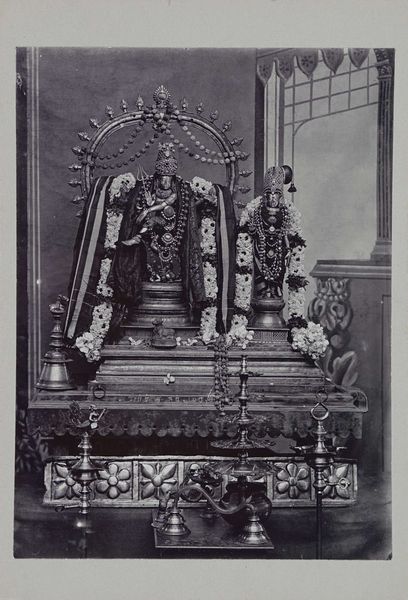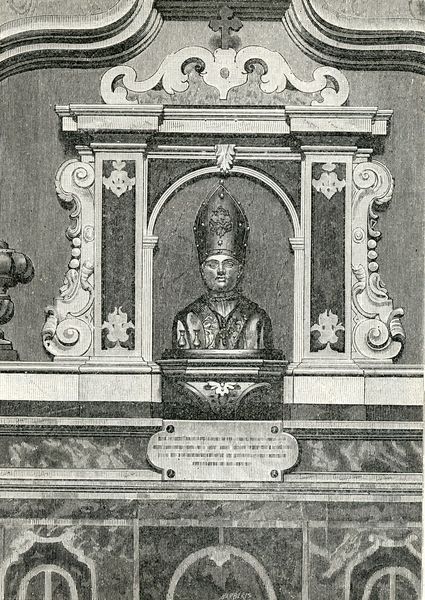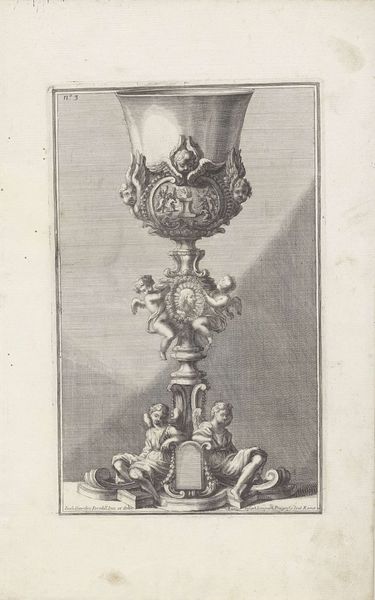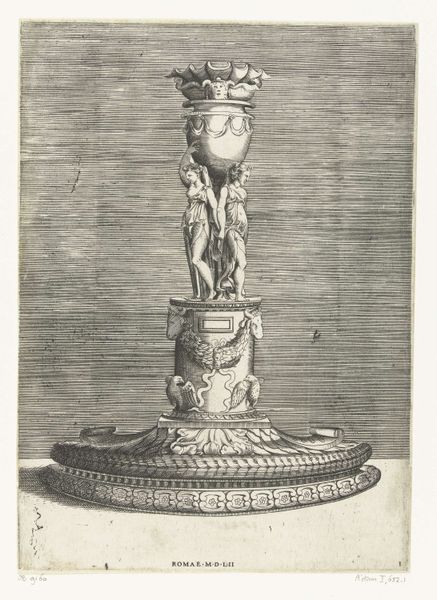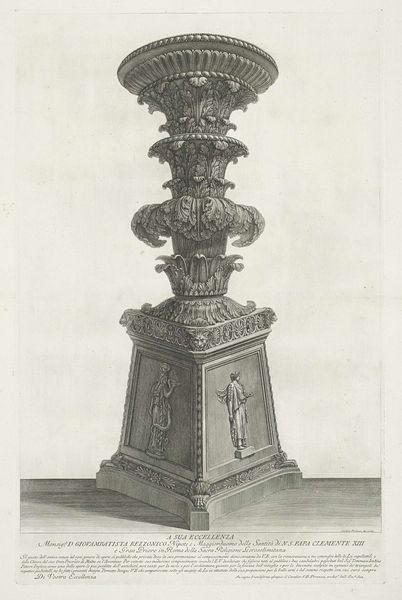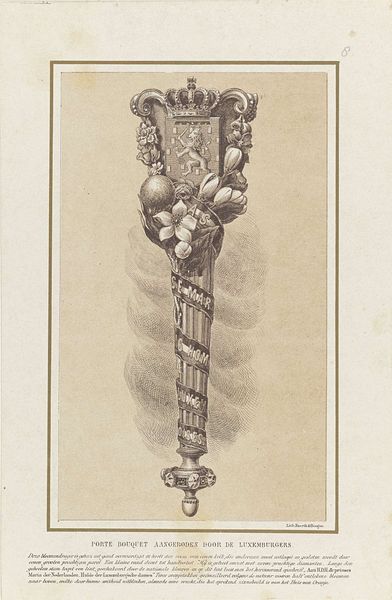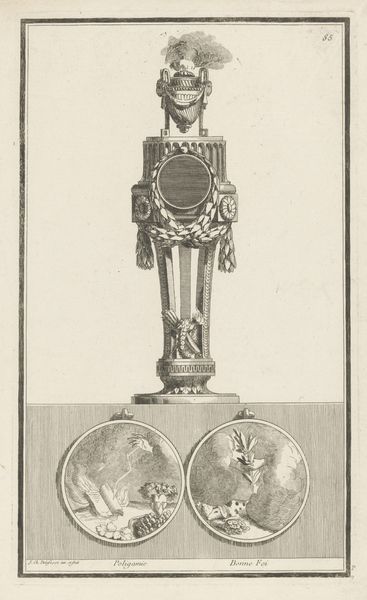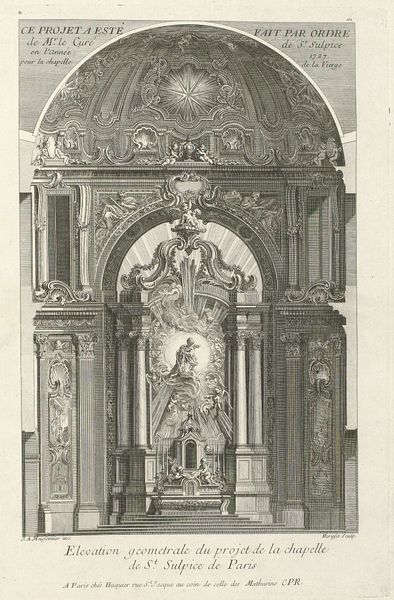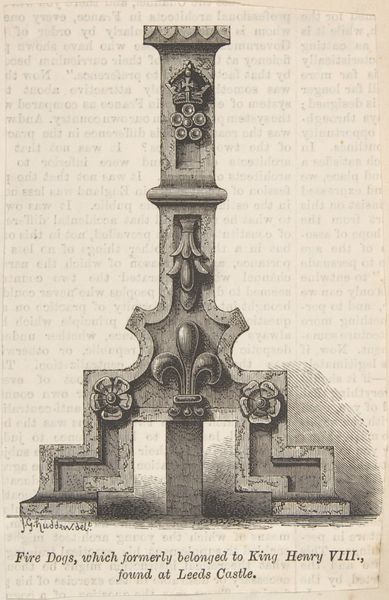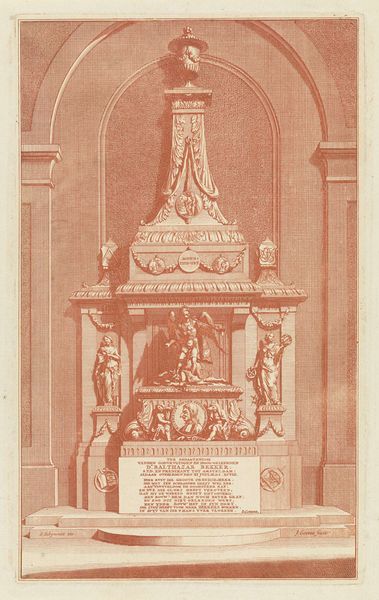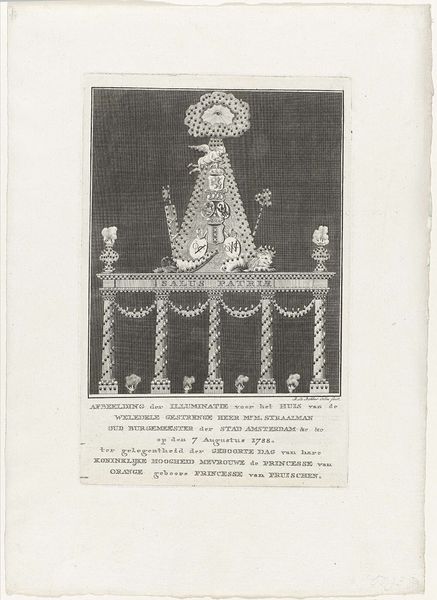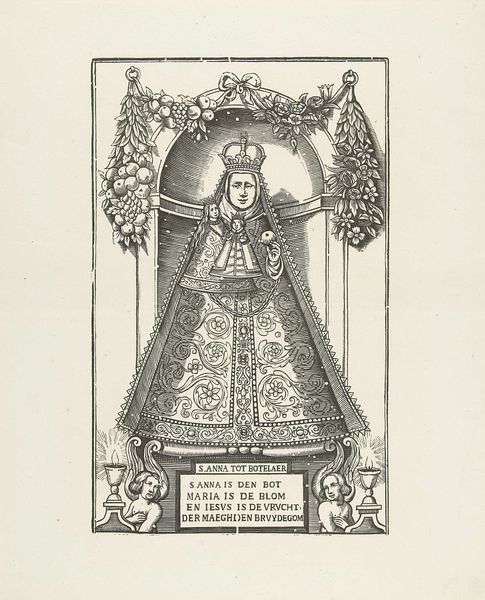
print, sculpture, engraving
#
portrait
# print
#
old engraving style
#
figuration
#
pencil drawing
#
sculpture
#
history-painting
#
engraving
#
realism
Copyright: Public domain
Editor: This is an engraving from 1898 by Giuseppe Barberis, titled *Statua Di San Nicola Nella Basilica Omonima*. The detail is just incredible. I am struck by how ornate and almost theatrical the presentation is of this Saint Nicholas statue. What's your take? Curator: What immediately catches my attention is the intricate representation of power dynamics through religious iconography. The halos, the staff, and the opulent robes are all carefully constructed symbols of authority and sanctity. Consider the historical context: late 19th century, a period marked by social inequalities. Editor: I see what you mean. The opulence feels... almost intentionally distanced from everyday life? Curator: Exactly. Now, think about who Saint Nicholas represents: traditionally, a figure of generosity, particularly towards children and the poor. How does this portrayal of wealth and power sit alongside that tradition? Doesn't this image seem at odds with a figure known for humility and giving? Editor: It really does make you wonder about the message they were trying to send. Was it about inspiring awe or something else? Curator: And for whom was the image created? What socio-economic class? How might they have viewed this display of religious grandeur, knowing that the Church’s vast wealth stood in stark contrast to their daily struggles? These images were rarely neutral; they reinforced particular ideological perspectives. Editor: That’s a fascinating point. So, beyond the immediate aesthetic impression, we need to consider whose interests this kind of imagery served. Curator: Precisely. And by interrogating those interests, we can begin to understand how images like this perpetuate or challenge existing power structures. Editor: This has really opened my eyes. It's more than just a portrait, it’s a cultural statement, wouldn’t you agree? Curator: Absolutely. Looking beneath the surface helps us understand the complexities and the often-unequal dialogues happening within a society.
Comments
No comments
Be the first to comment and join the conversation on the ultimate creative platform.
